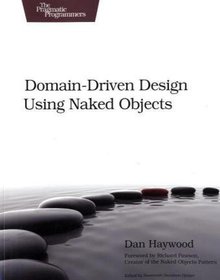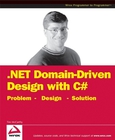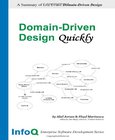Domain-Driven Design Using Naked Objects

Book Details:
| Publisher: | Pragmatic Bookshelf |
| Series: | Pragmatic Bookshelf , Using |
| Author: | Dan Haywood |
| Edition: | 1 |
| ISBN-10: | 1934356441 |
| ISBN-13: | 9781934356449 |
| Pages: | 375 |
| Published: | Dec 29 2009 |
| Posted: | Jan 05 2015 |
| Language: | English |
| Book format: | |
| Book size: | 9.59 MB |
Book Description:
Domain-driven design (DDD) focuses on what matters in enterprise applications: the core business domain. Using object-oriented principles, you can develop a domain model that all team members-including business experts and technical specialists-can understand. Even better, this model is directly related to the underlying implementation. But if you've tried building a domain-driven application then you'll know that applying the DDD principles is easier said than done. Naked Objects, an open-source Java framework, lets you build working applications simply by writing the core domain classes. Naked Objects automatically renders your domain object in a generic viewer--either rich client or HTML. You can use its integration with Fitnesse to test-drive the development of your application, story-by-story. And once developed, you can deploy your application either to the full Naked Objects runtime, or within your existing application infrastructure. In this book, Dan Haywood first gives you the tools to represent your domain as plain old Java objects, expressing business rules both declaratively and imperatively. Next, you'll learn the techniques to deepen your design while keeping it maintainable as the scope of your application grows. Finally, you'll walk through the development practices needed to implement your domain applications, taking in testing, deployment, and extending Naked Objects itself. Throughout the book, you'll build a complete sample application, learning key DDD principles as you work through the application step by step. Every chapter ends with exercises to gain further experience in your own projects. Through its focus on the core business domain, DDD delivers value to your business stakeholders, and Naked Objects makes using DDD easy to accomplish. Using Naked Objects, you'll be ready in no time to build fully featured domain-driven applications.
Download Link:
Related Books:
.NET Domain-Driven Design with C#
Problem - Design - Solution
As the first technical book of its kind, this unique resource walks you through the process of building a real-world application using Domain-Driven Design implemented in C#. Based on a real application for an existing company, each chapter is broken down into specific modules so that you can identify the problem, decide what solution will provide the best results, and then execute that design to solve the problem. With each chapter, you'll build a complete project from beginning to end....
Domain-Driven Design Quickly
Domain Driven Design is a vision and approach for dealing with highly complex domains that is based on making the domain itself the main focus of the project, and maintaining a software model that reflects a deep understanding of the domain. This book is a short, quickly-readable summary and introduction to the fundamentals of DDD; it does not introduce any new concepts; it attempts to concisely summarize the essence of what DDD is, drawing mostly Eric Evans' original book, as well other sources since published such as Jimmy Nilsson's Applying Domain Driven Design, and various DDD discussion forums. The main topics covered in the book include: Building Domain Knowledge, The Ubiquitous Language, Model Driven Design, Refactoring Toward Deeper Insight, ...
Applying Domain-Driven Design and Patterns
With Examples in C# and .NET
Applying Domain-Driven Design and Patterns is the first complete, practical guide to leveraging patterns, domain-driven design, and test-driven development in .NET environments. Drawing on seminal work by Martin Fowler and Eric Evans, Jimmy Nilsson shows how to customize real-world architectures for any .NET application. You'll learn how to prepare domain models for application infrastructure; support business rules; provide persistence support; plan for the presentation layer and UI testing; and design for service orientation or aspect orientation. Nilsson illuminates each principle with clear, well-annotated code examples based on C# 2.0, .NET 2.0, and SQL Server 2005. His examples will be valuable both to C# developers and those working with other...
2007 - 2021 © eBooks-IT.org



